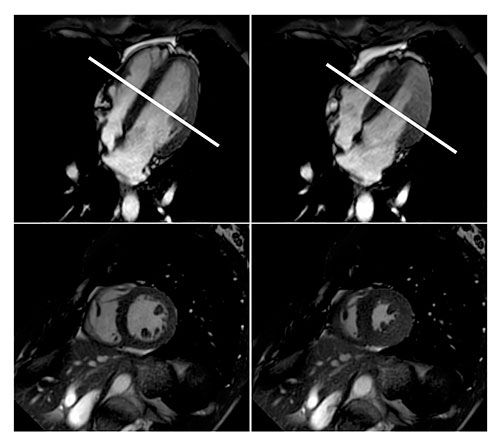3D Fused CT/MRI Images Improve Coronary Artery Disease Diagnosis
Multi-modal approach maximizes imaging capabilities.

Combining CT and MRI imaging can give a boost to the diagnosis of coronary artery disease, improving a provider’s ability to identify the best treatment options for individual patients, according to new research.
Published today in Radiology: Cardiothoracic Imaging, a study, led by Jochen von Spiczak, M.D., M.Sc., a radiologist and computer scientist at Institute of Diagnostic and Interventional Radiology at University Hospital Zurich in Switzerland, revealed this new technique improved the ability to identify negative clinical findings in the heart.
As the most common type of heart disease globally, coronary artery disease has a significant impact in the United States. According to the Centers for Disease Control & Prevention, it affects 18.2 million adult Americans.
Currently, both CT and MRI are used as noninvasive methods to diagnose and evaluate the disease. CT offers high-resolution images of coronary anatomy, and MRI highlights details about blood supply to the heart muscle with no radiation exposure. While helpful, when these modalities are used separately, they’re capabilities aren’t maximized, von Spiczak said, and they also only look at a limited subset of characteristics of coronary artery disease.
“From this experience, the idea came up to fuse information on different pathologic aspects of the disease and to combine them in a single 3D image, which can be interpreted in a very quick, but highly accurate, fashion,” he said.
To get the most out of both modalities, von Spiczak and his team created a technique that brings together all available information from CT and cardiac MRI into one 3D image. The resulting information from the fused image helped correlate specific stenoses and their severity with any possible cardiac tissue and ischemia. Providers can use this information, he said, to guide interventional or surgical revascularization procedures, such as stenting or bypass surgery, that can improve blood flow to the heart.
“The technique may allow for an easier and possibly more accurate identification of patients and coronary stenoses that are likely to benefit from revascularization,” he said. “Applying today’s clinical 2D standard led to a substantial number of uncertain findings in our study, whereas most of these divergent findings could be solved when including additional information from CT-derived blood flow estimates information and 3D image fusion.”
In comparing their approach with conventional 2D read-outs from 17 patients with suspected or identified coronary artery disease who received CT and cardiac MRI, the team determined the 2D read-outs provided uncertain findings in eight cases. Their new 3D-fused image technique added clarity to divergent findings in six of those cases.
Overall, von Spiczak said, even though the technique would be more expensive, the study highlights the potential role the fused approach could assume in complex cases that produce uncertain findings on the first test, such as inconsistent or contradictory CT and MRI results.
Can Abbreviated MRI Have an Impact in Rectal Cancer Staging?
April 4th 2025Abbreviated MRI demonstrated a 95.3 percent specificity for rectal cancer and provided strong agreement with the full MRI protocol for T staging and detection of extramural venous invasion, according to newly published research.
GE HealthCare Debuts AI-Powered Cardiac CT Device at ACC Conference
April 1st 2025Featuring enhanced low-dose image quality with motion-free images, the Revolution Vibe CT system reportedly facilitates improved diagnostic clarity for patients with conditions ranging from in-stent restenosis to atrial fibrillation.